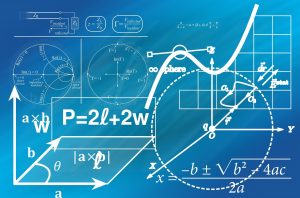13 Strategy: Reading Effectively in Math

Math text typically alternates passages of explanation in English with pieces of mathematics such as example problems.
When reading explanatory material in a math text…
- Read every word, one word at a time. You can’t catch the “drift” by skimming
- Every word counts (even 2-letter ones)
When looking at mathematics (equations and numerical expressions)…
-
- See how each line follows from the line before
- Read any written explanations the author gives you
- Know where each line comes from before going on
- Do not skip steps!
- Read with pencil and paper in hand
- Try to work out each line for yourself, step by step
- Go over problems that the author has worked out in detail
How to work a solved problem in the textbook
-
- Work through the problem one step at a time
- Close the book and try to work it again on your own
- Repeat until you can reproduce the solution with the book closed
- Try not to memorize the solution
- Keep track of “what to do” to move from each line to the next
- It’s okay if your version has more lines than the author’s (it may take you two or three steps to accomplish what the author does in one). This is a good sign that you’re thinking for yourself!
Math texts with visual illustrations
Spend time studying any pictures. Every line and symbol is there for a specific reason. Take the time to understand the picture thoroughly—in detail. Pay special attention to graphs and charts (they convey lots of information in a small space).
The bottom line is to go slow when reading math text. It’s not a race to see how fast you finish, but how much you understand.
So be patient, remember that “slow is fast,” and enjoy math reading!
Annotation is essential to reading any subject matter in school or work. While reading slowly and thoroughly make certain to annotated your thoughts, questions, and/or answers either in the margins or insert a piece of notepaper to the text in that section.
Built-In Practice: Reading Effectively in Math
Use the above strategies to read the following Math exercises.
1.A real estate agent received a 6% commission on the selling price of a house. If his commission was $8,880, what was the selling price of the house?
2.An electric motor makes 3,000 revolutions per minute. How many degrees does it rotate in one second?
1a. 6% x = 8,880 : x = selling price of house. x = $148,000 : solve for x.
2a. 3000 revolutions / minute = 3000×360 degrees / 60 seconds = 18,000 degrees / second
https://www.analyzemath.com/high_school_math/grade_10/problems.html

